Figure 4.
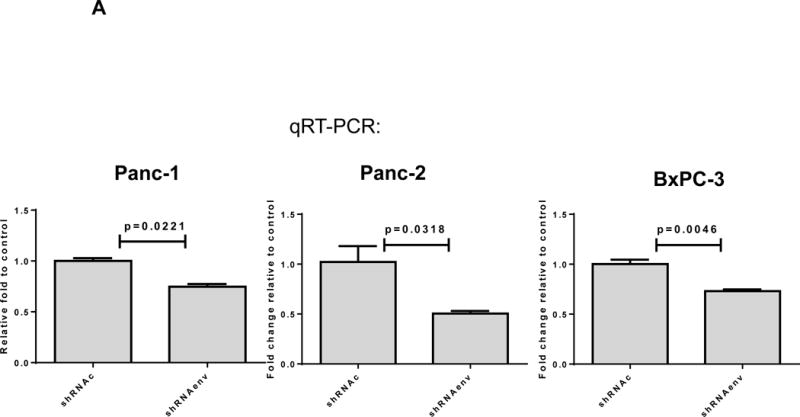
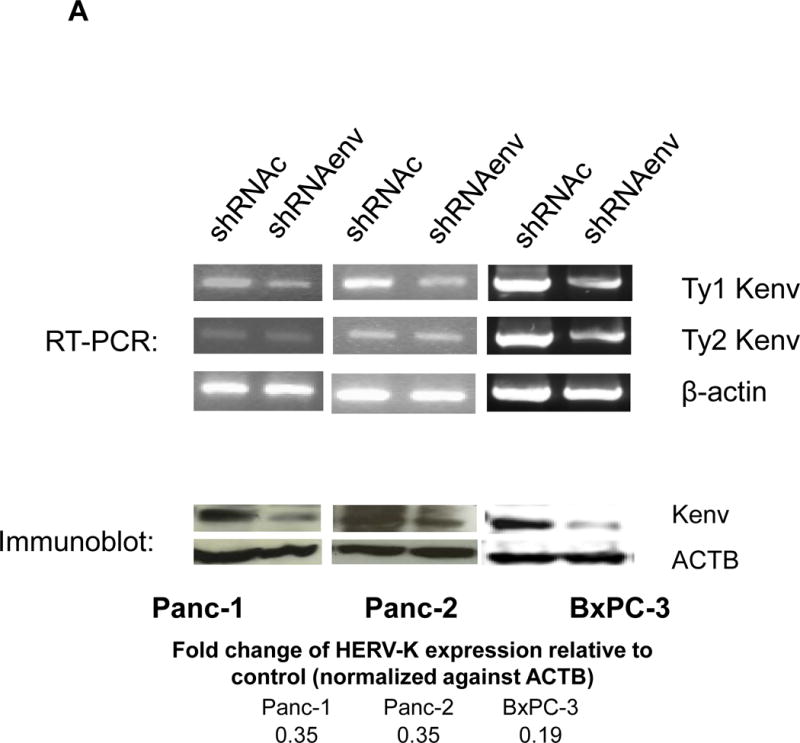
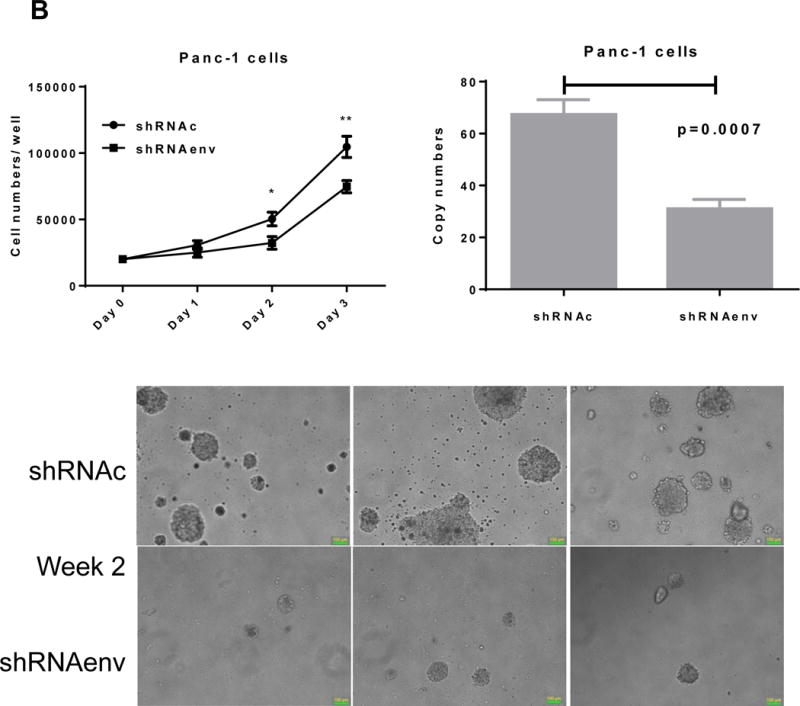
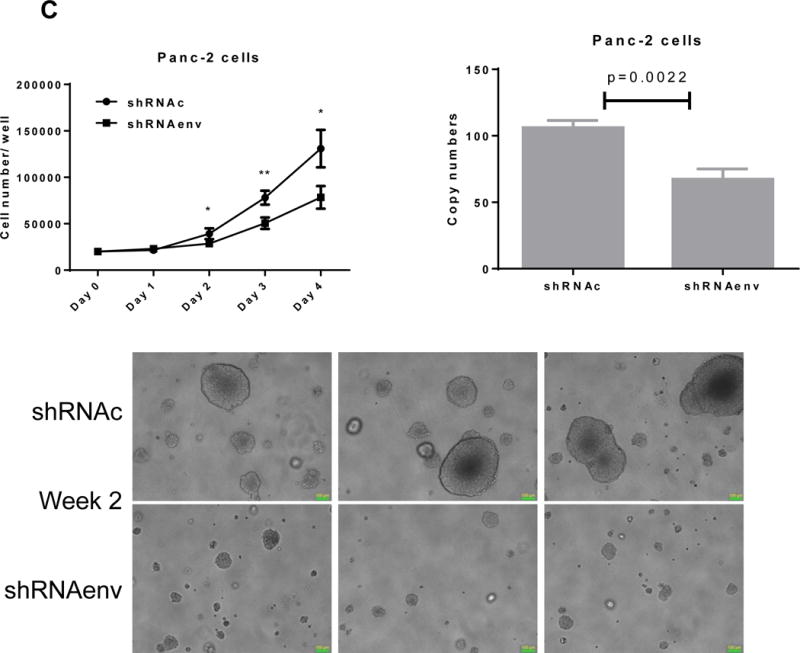
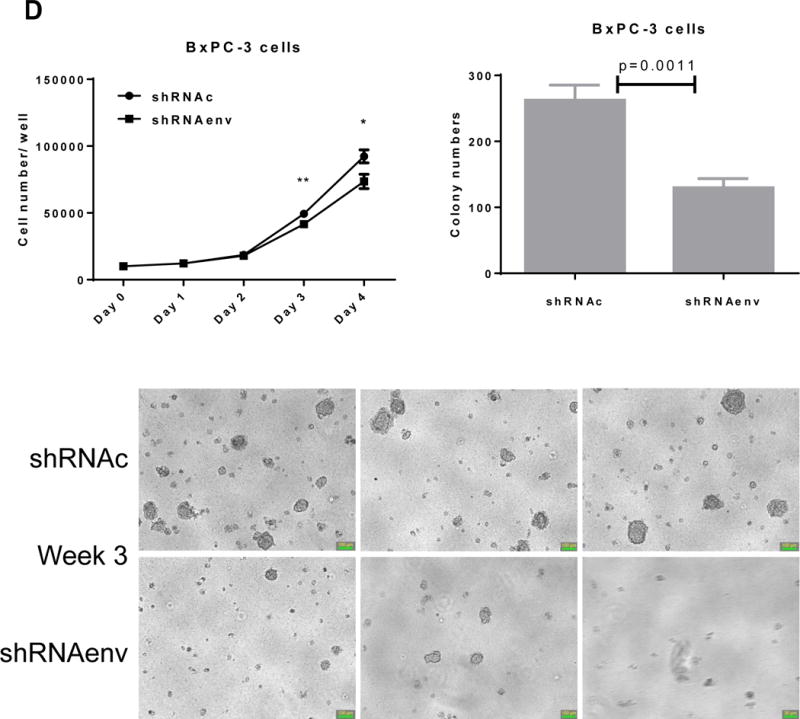
Downregulation of HERV-K in PC cell lines in vitro by shRNAenv transduction. A, reduced expression of HERV-K env mRNA was demonstrated in Panc-1, Panc-2, or BxPC-3 cells transduced with HERV-K env shRNA (shRNAenv) compared with control shRNA (shRNAc). Expression was determined by qRT-PCR (P = 0.0221 for Panc-1, P = 0.0318 for Panc-2, and P = 0.0046 for BxPC-3, top panel) and confirmed by RT-PCR in both cell lines and in the BxPC-3 cell line (middle panel). Furthermore, the reduced expression of HERV-K Env at the protein level was demonstrated by immunoblot assay using 6H5 mAb (bottom panel). ACTB was used as the control. Reduced expression of HERV-K env protein was demonstrated in Panc-1 (65%), Panc-2 (65%), and BxPC-3 (81%) analysis by Image J. B–D, determination of cell proliferation and colony formation in Panc-1 (B), Panc-2 (C), and BxPC-3 cells (D) after treatment with shRNAenv or shRNAc. 10 fields were randomly chosen from each well under a microscope (10×), colonies in these fields were counted, and the sum was used as the colony number of that well. A significantly decreased proliferation rate (top left panels) and reduced transformation was observed in the three PC cell lines transduced with shRNAenv than in those transduced with shRNAc. In an anchorage-independent colony formation assay, the colony-formation potential of Panc-1, Panc-2, and BxPC-3 cells was significantly inhibited by shRNAenv (P = 0.0007, P = 0.0022 or P = 0.0011, respectively) (top right panels). Representative pictures of colonies formed from shRNAc- or shRNAenv-transduced Panc-1(week 2 post-transduction), Panc-2 (week 2 post-transduction) or BxPC-3 cells (week 3 post-transduction) are shown (bottom panels, magnification = 100×, the bar=100 μm). For statistical analysis, an unpaired two-tailed t-test was used.
